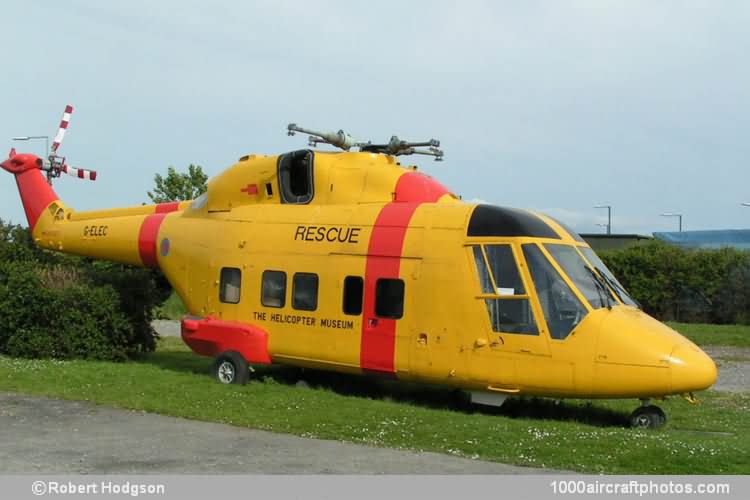01/31/2011. Remarks by Johan Visschedijk: "The Westland prototype WG.30-100, G-BGHF c/n WA.001P, was first flown on April 10, 1979. It was subsequently demonstrated to the British Army and shown to be able to lift up to fourteen fully-equipped troops. However, this did not lead to a military order and the fact was that the Westland 30 needed more power, and hence the Series 200 was developed.
The Series 200 was a variant with more powerful General Electric CT7-2B turboshafts, each rated at 1,712 shp. These engines drove the same conformal main gearbox as that of the Series 100 but via an additional reduction gearbox on each engine output shaft, due to the higher output speed of the CT7.
The Series 200 was generally similar to the Series 100, except for new sideways facing engine air intakes, heated for anti-icing; new engine control system to match the CT7; and new DC electrical generation system. Visible external differences include the shape of the upper fuselage decking, which was lengthened to accommodate the longer raft upon which the engines and main gearbox were mounted.
The seventh production WG.30-100 (c/n 007), that had been registered G-BKNV on February 14, 1983, was subsequently converted to the prototype Series 200. Reregistered G-ELEC on June 17, the WG.30-200 was first flown on September 3, 1983. However, despite demonstrations to potential military and civil clients, no more Series 200 were produced.
The registration was cancelled on February 27, 1998, and the aircraft was donated to The Helicopter Museum, where it is displayed in the car park, finished in fake SAR colors."
